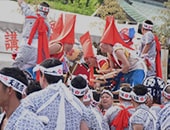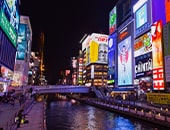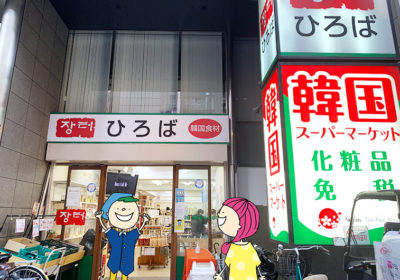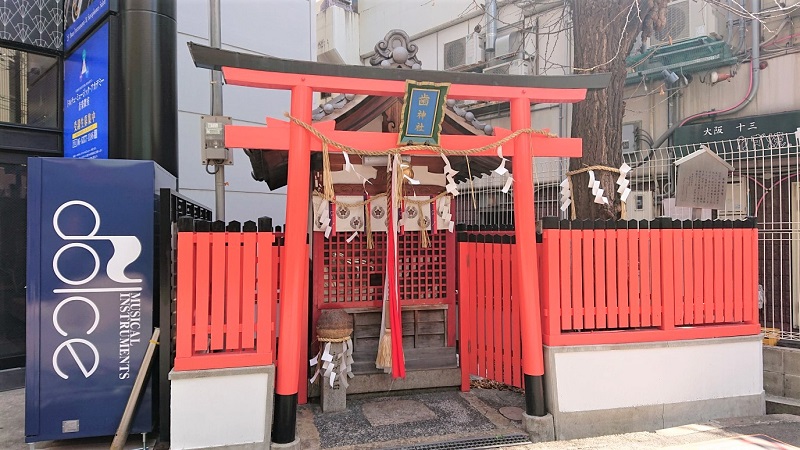

Supporter
Excuse me…what?
Osaka’s “Tooth Shrine” wards off floods?!?
Follow the JR tracks east from the bustling Hankyu Department Store and bright red HEP5 Ferris Wheel for about 3 minutes. There, in a slightly wider than usual alleyway, you’ll come across a vibrantly painted red and black torii gate and picket fence in the same two colors. This is Ha Jinja Shrine.
[Contents]
■Ha Jinja—the tooth shrine?!?

Pronounced Ha Jinja, those characters above say “tooth shrine”. The official name is written 綱敷天神社 末社 歯神社 meaning that it’s a subsidiary shrine of Tsunashikiten Jinja. A sacred tree, which towers over the adjacent train tracks, keeps the tiny little shrine building company. The whole area only covers about 7㎡. It is of course, unattended.
An amber-colored lucky rock stands in front of the shrine building, adorned with zig-zag paper streamers (shide) and shimenawa (a rope indicating that it is a sacred object).

Rubbing this stone is believed to remove dental pain. I guess it’s worth a try!
Also, every year on June fourth, aka Cavity Prevention Day in Japan, they hold a festival in appreciation of toothbrushes.
■So there’s an ancient Shinto tooth deity…right?
Wrong! It’s a bit complicated, but here’s the gist of how Ha Jinja became a tooth shrine.
As the sign below explains, in the past when the Yodo River often flooded, flood damage stopped right near this area. Using a different expression, the “teeth” of the water damage were blocked. And so, we get what is now known as the Tooth Shrine (Ha Jinja).

Since ancient times, Inari-san was the revered agricultural deity. Nearby Yodo River overflowed many times in the late Edo period (1603–1867) leading to massive flooding across Umeda. When this area was about to be submerged, the spirit of Inari-san embodied in a giant boulder cut off the water and protected this part of the city.
Residents relied on her and would gather to pray for her powers to cut off further flooding and prevent damage to their homes. The boulder is now buried below the shrine building and the lucky stone, pictured above, is considered to be a chip from the giant boulder.
Soon, this became a sacred spot and the term 歯止め (literally: tooth stop), was used to describe how the flooding stopped here. The term eventually morphed and took on a new meaning at the shrine: stopping tooth pain.
There was a popular demand to build a real shrine on this spot during the late nineteenth century. It was built as a subsidiary shrine of Tsunashikiten Jinja, but it is actually located outside of the main shrine grounds.

This is all very interesting, but I wanted to find out more about the history of Yodo River floods and flood damage in Umeda. So I conducted some internet research on the Ministry of Land, Infrastructure, Transport and Tourism’s Yodo River office website.
■ “Stopping the tooth” & disaster prevention in Osaka
The Yodo River was the source of incredible flooding during typhoons and rainstorms. There are even records in ancient texts (the Kojiki and Nihon Shoki) of Emperor Nintoku having the Manda Embankments built along the river. More than a millennium later, Toyotomi Hideyoshi had the Uji River and Ogura Ponds, which were located upstream of the Yodo River separated with the Taiko Embankment. He’s also known for having the Bunroku Embankment built on the left bank of Yodo River.
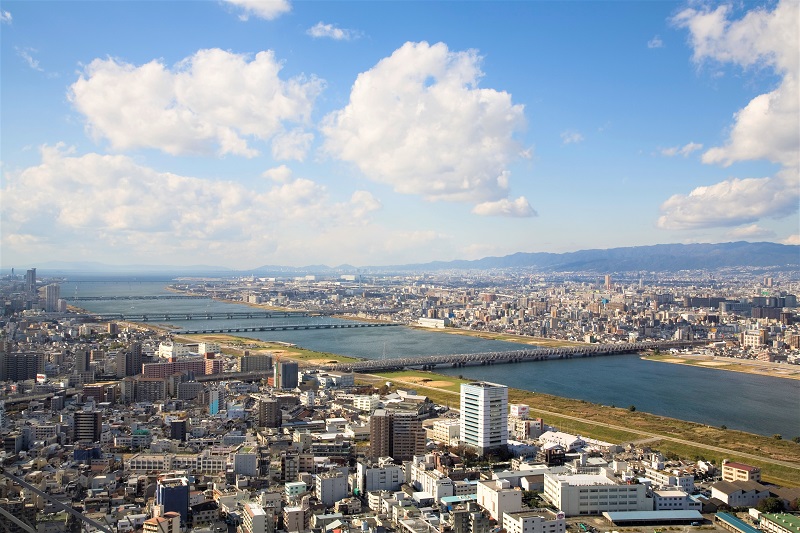
Records show that there were massive floods due to breaches in Yodo River embankments numerous times including in 1674, 1735, 1802, 1885, and 1917.
The worst damage was done in 1802 when, during a typhoon, there was a breach in the embankment in Neyagawa. Extensive flooding in modern-day Kadoma, Daito, Higashi-Osaka, and the eastern part of Osaka City left these areas under water for 77 days. 77 days!
It’s very likely that the legendary boulder that blocked further flooding appeared during the 1735 breech, and this was potentially the reason Ha Jinja was built. However, it’s also possible that the shrine’s got it’s namesake after the more severe 1802 flood.
It’s amazing to think that a flood reached this far into central Osaka. There are monuments scattered throughout the city memorializing disasters that Osaka has suffered throughout the years. And this shrine is another reminder that the city is vulnerable to high tides and floods. With the exception of the Uemachi Plateau, most of the city lies on low land. It’s hard to imagine the city going underwater, but the reality is that without pumps it’s impossible to prevent flooding.
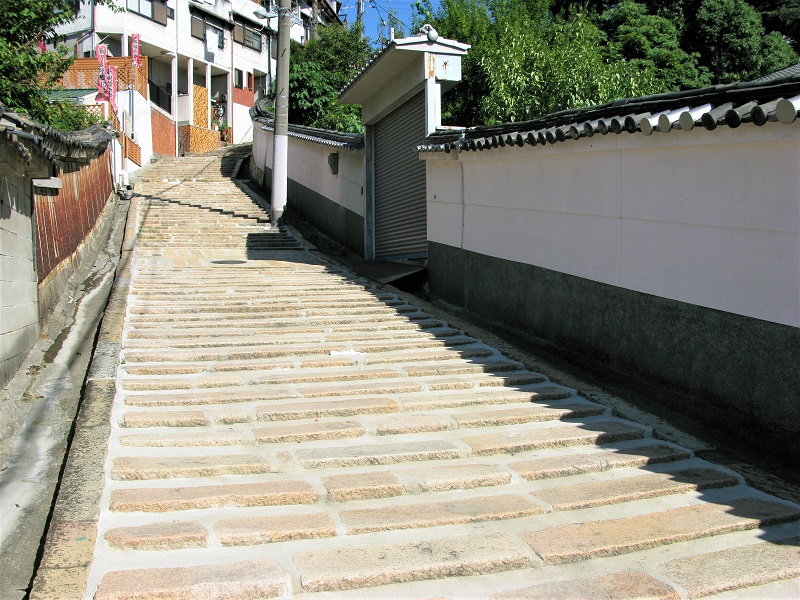
▲Differences in elevation are visible at the Seven Slopes of Tennoji. Pictured here is Genshōji Slope.
The city of Osaka is making preparations to be able to handle heavy rains of 60ml/Hr once in a decade. But this kind of heavy rain is becoming more common. And when you look at hazard maps showing regional vulnerabilities, you can see they take into account possible breaches in the embankments along Yodo River.
■Praying to prevent disaster in the middle of Umeda
Praying for dental health is all well and good, but keep in mind the original intention of the shrine was for praying to prevent and stop natural disasters.
It’s similar to praying to stop a situation from deteriorating, to protect ourselves from impending disasters, or to wish for a safe home while warding off evil. But I think the main point here is that we should take measures on the early and face emergencies so they can be stopped.

This very unusual shrine has a deep history showing us the importance of disaster preparedness. It exists to communicate this point to future generations. It may look like a tooth shrine, but it really began as a place to pray for protection from natural disasters.


Charms and talismans from Ha Jinja can be purchased at Tsunashikiten Jinja near the Chayamachi exit of Hankyu Osaka-Umeda Station.
▼Enjoyed this article? Read more!
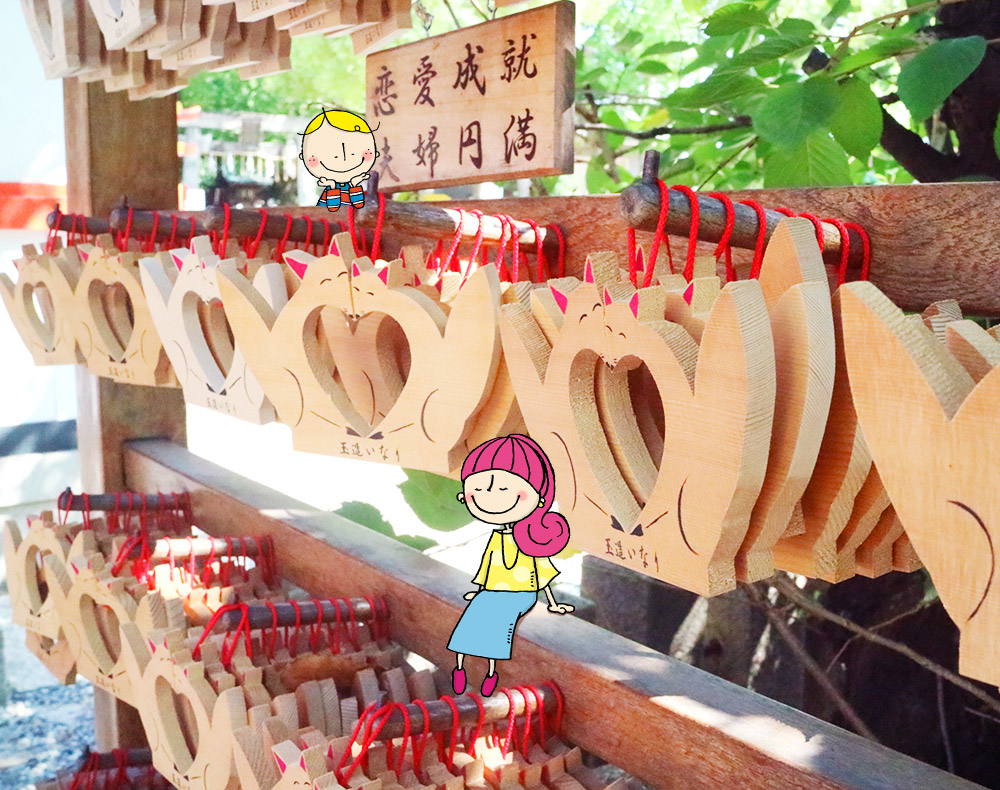 Maybe all you need is a little luck! 6 spots to improve your love life♡
Maybe all you need is a little luck! 6 spots to improve your love life♡

Supporter
The contents of this page were current at the time it was posted, but may differ from the present.
Text visible in this map is based on information from Map Tiler and may differ from actual geographical names.







